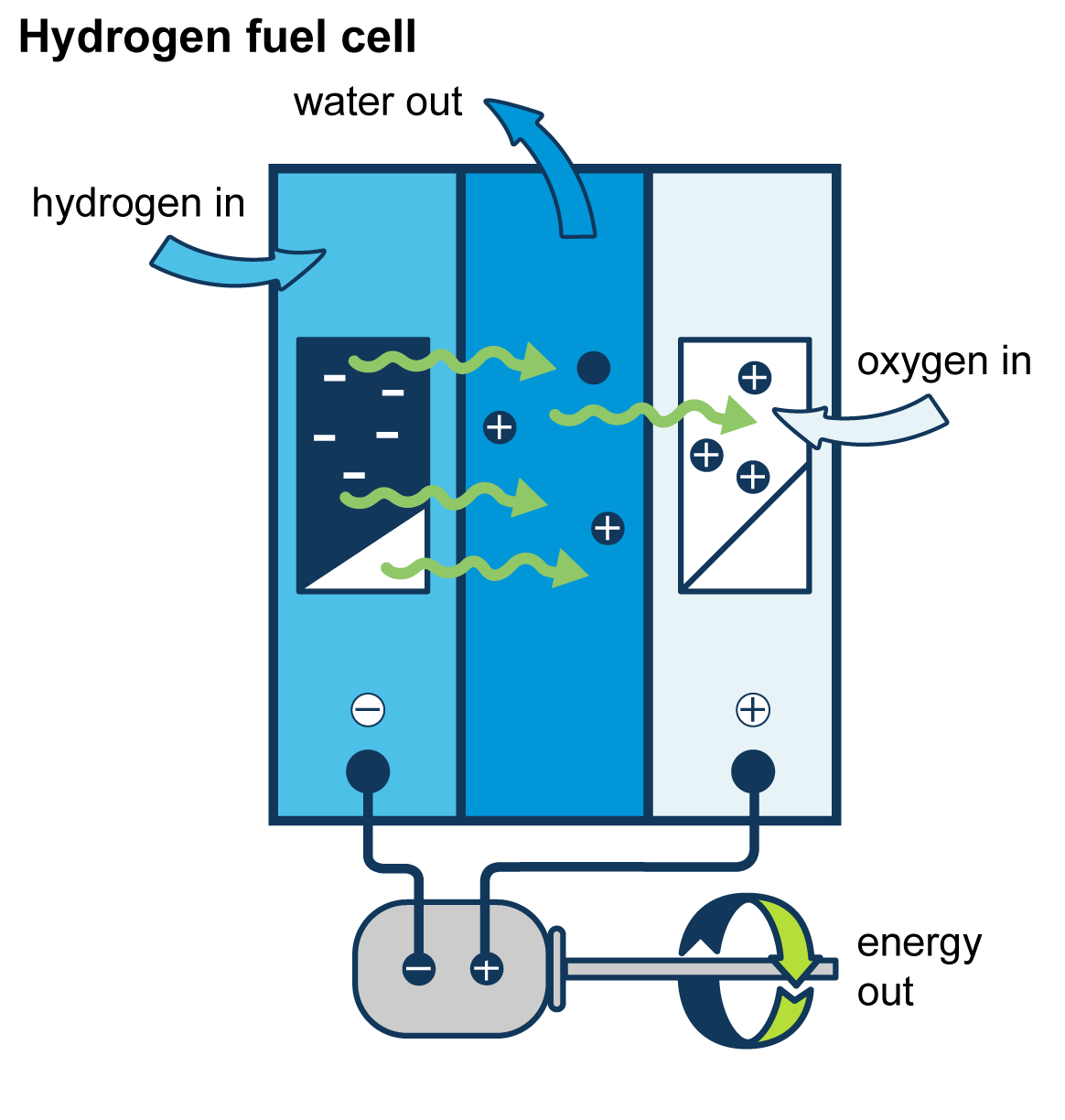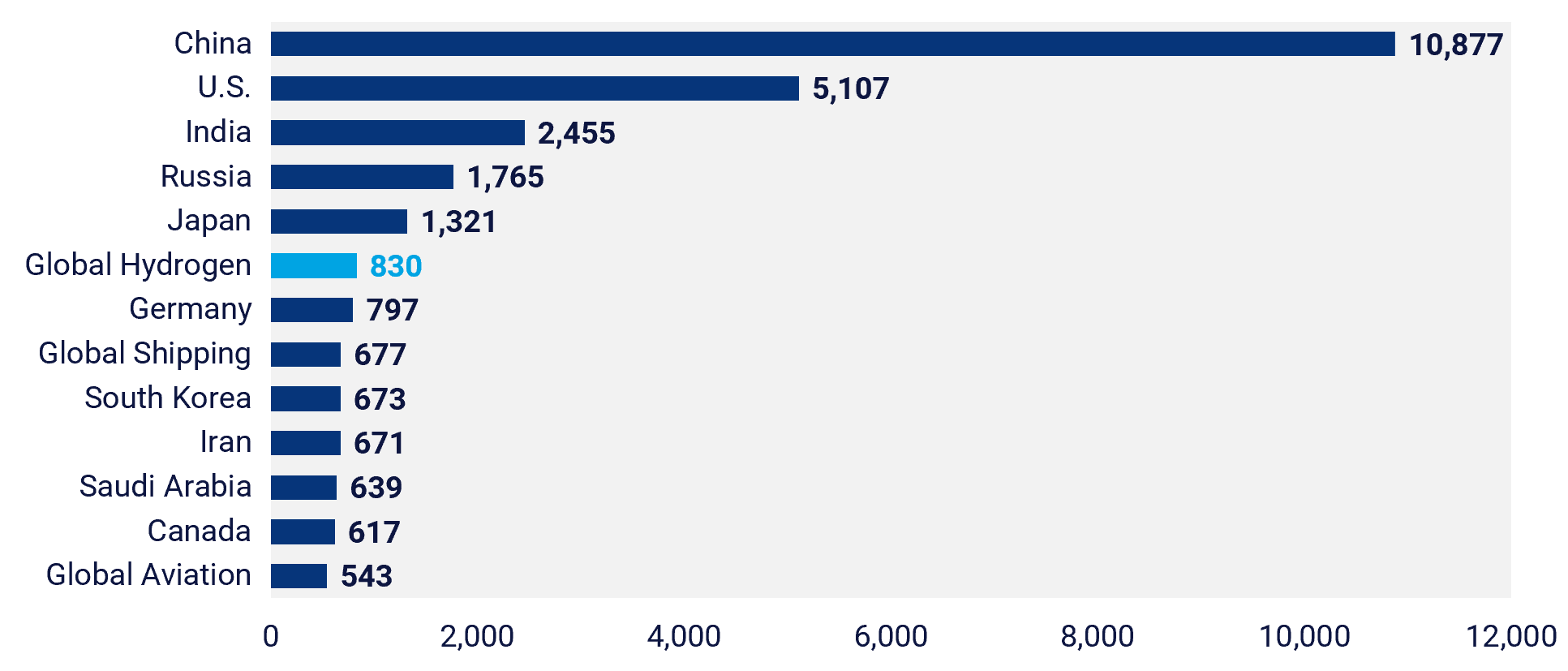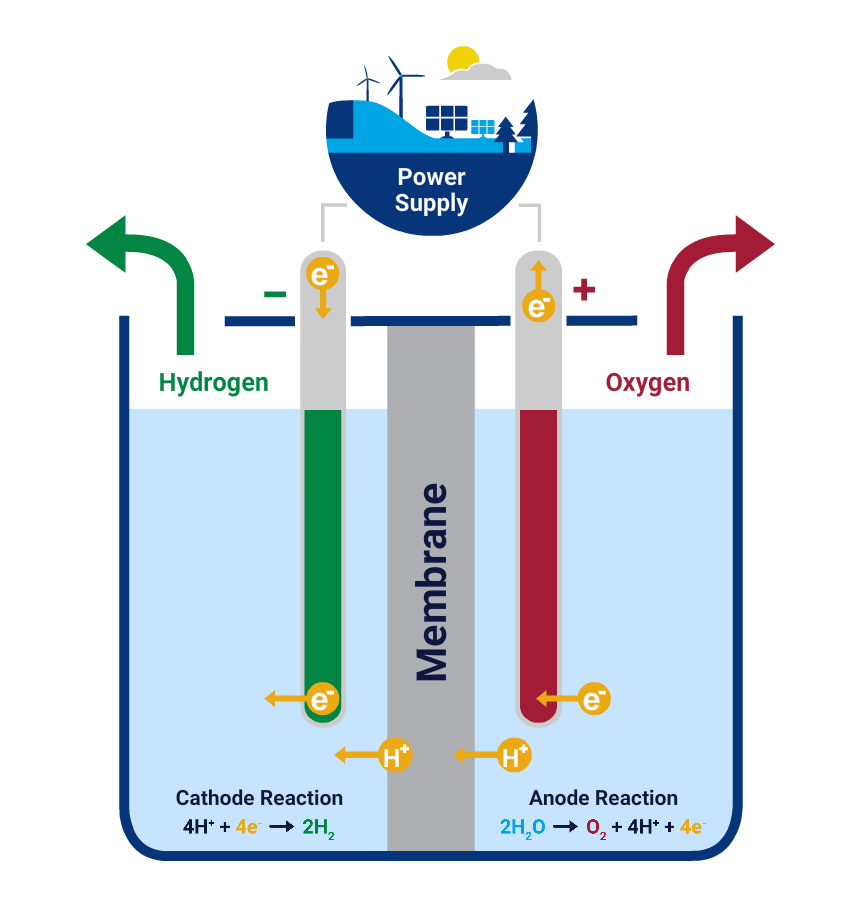Hydrogen is the most abundant element in the universe and is used extensively in the global economy for a variety of industrial and commercial purposes. Its primary usage is in refining petroleum, food processing and metal manufacturing (Wood Mackenzie, 2019). However, being such a versatile element, hydrogen can also be used for energy storage and as a fuel source in hydrogen power cells for transportation. Two sectors which are especially carbon-intensive (EIA, 2020).

Studies indicate that 99% of global hydrogen is produced using fossil fuels (Wood Mackenzie, 2019). The production of hydrogen using this process contributes more to annual global carbon dioxide emissions than the entire nation of Germany (Wood Mackenzie, 2019).

Production of Green Hydrogen
An alternative method to produce hydrogen is through the electrolysis of water. Electrolysis is a common industrial process that uses electricity to split substances into the atoms that they are made of. In the case of water, pure atoms of hydrogen and oxygen are extracted. If the electricity used to power this process is sourced from renewable sources such as solar or wind then the emissions could be completely eliminated (Wood Mackenzie, 2019).

This method currently only accounts for one per cent of global production but is gaining significant attention internationally (Wood Mackenzie, 2019). Japan has already taken a giant first step by opening a green hydrogen production facility which will be used to supply the growing infrastructure of hydrogen-powered cars and buses. Even more impressive is South Korea’s goal of becoming a green hydrogen economy by 2050. With ambitious plans for building extensive infrastructure and rolling out more fuel cell vehicles (FCVs) in the coming years. This demand by large international markets has created a surge in the development of production plants by elite companies like Shell and Eneco (Shell Hydrogen Study 2017).
The Hurdle of Cost
Currently, producing green hydrogen is significantly more expensive than its hydrocarbon counterpart. Research on the topic suggests that green hydrogen production will become competitive with conventional methods by 2030 (Wood Mackenzie, 2019). Australia is uniquely situated within this market and is able to produce green hydrogen at competitive prices at current rates. As a result, green hydrogen produced locally is being exported to countries like Japan through the collaborative efforts of the University of Japan and the Queensland University of Technology (QUT 2020). However, more demand for green hydrogen from the larger populous would greatly increase the rate at which this technology is adopted.
Choosing to go Green
Infrastructure for hydrogen-powered vehicles is limited even in developed economies. Refuelling stations are sparse and this acts as a deterrent for potential buyers of FCVs. However, the growing traction of green hydrogen will indeed create the required infrastructure for this environmentally impactful technology. Choosing FCVs and electric vehicles can greatly affect the adoption of this technology and the necessary infrastructure.
Please visit the THRIVE Project for further information about sustainability, environmental footprint, social inequality and other relevant topics related to sustainable development. THRIVE Project provides technologies and tools guiding society towards providence and prosperity.
REFERENCES
Woodmac.com. 2020. The Future For Green Hydrogen. [online] Available at: <https://www.woodmac.com/news/editorial/the-future-for-green-hydrogen/> [Accessed 22 September 2020].
Eia.gov. 2020. Use Of Hydrogen – U.S. Energy Information Administration (EIA). [online] Available at: <https://www.eia.gov/energyexplained/hydrogen/use-of-hydrogen.php> [Accessed 19 September 2020].
Shell, 2017. ENERGY OF THE FUTURE?. [online] Available at: <https://hydrogeneurope.eu/sites/default/files/shell-h2-study-new.pdf> [Accessed 20 September 2020].
Mayes, C., 2020. First Green Hydrogen Export To Japan – Materials Science And Engineering. [online] Materials Science and Engineering. Available at: <https://research.qut.edu.au/msae/Our%20research/first-green-hydrogen-export-to-japan/> [Accessed 19 September 2020].

















